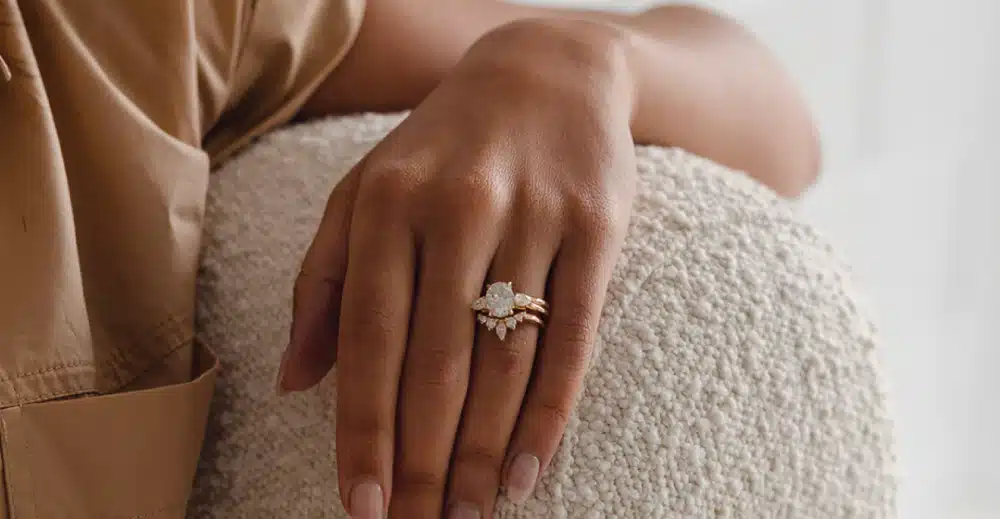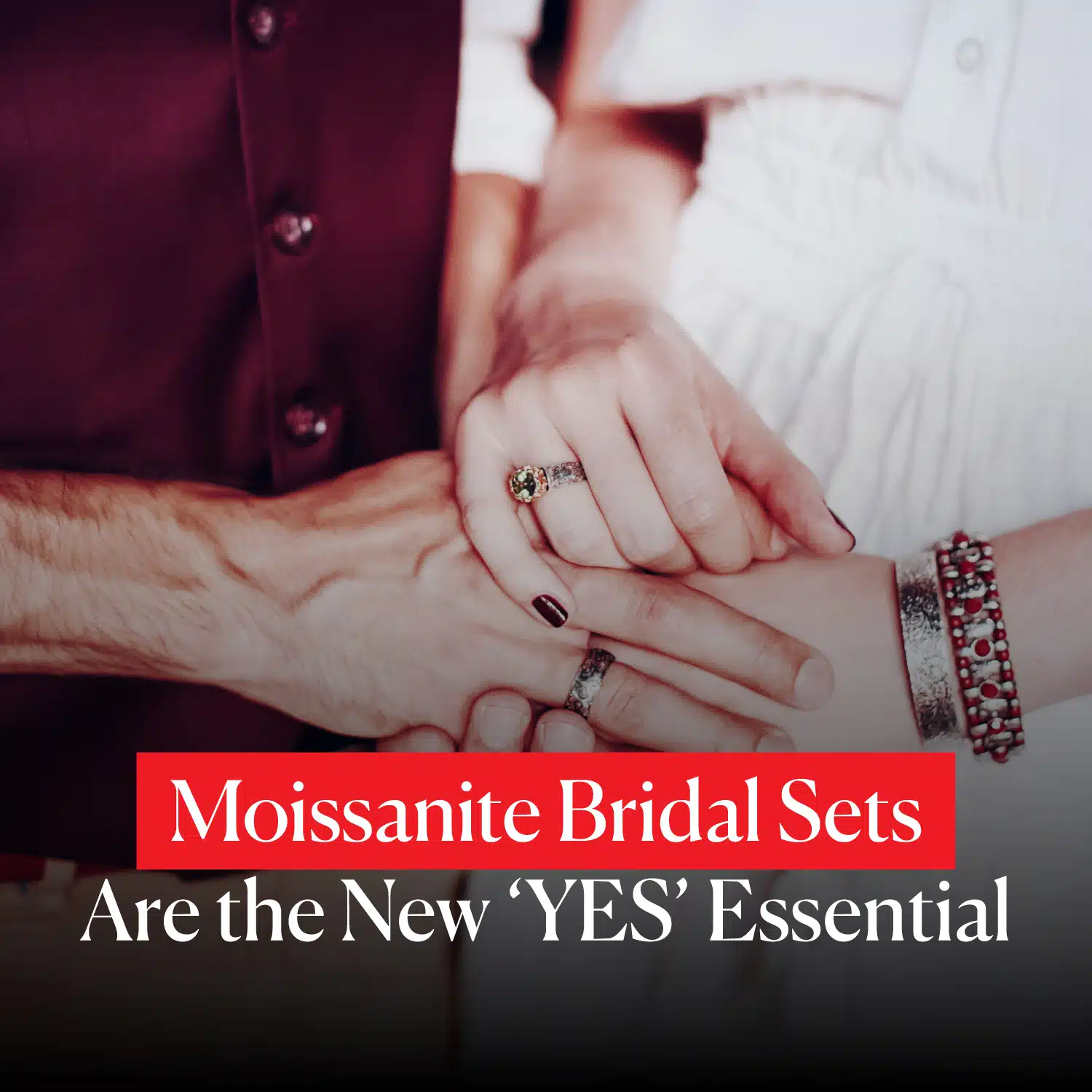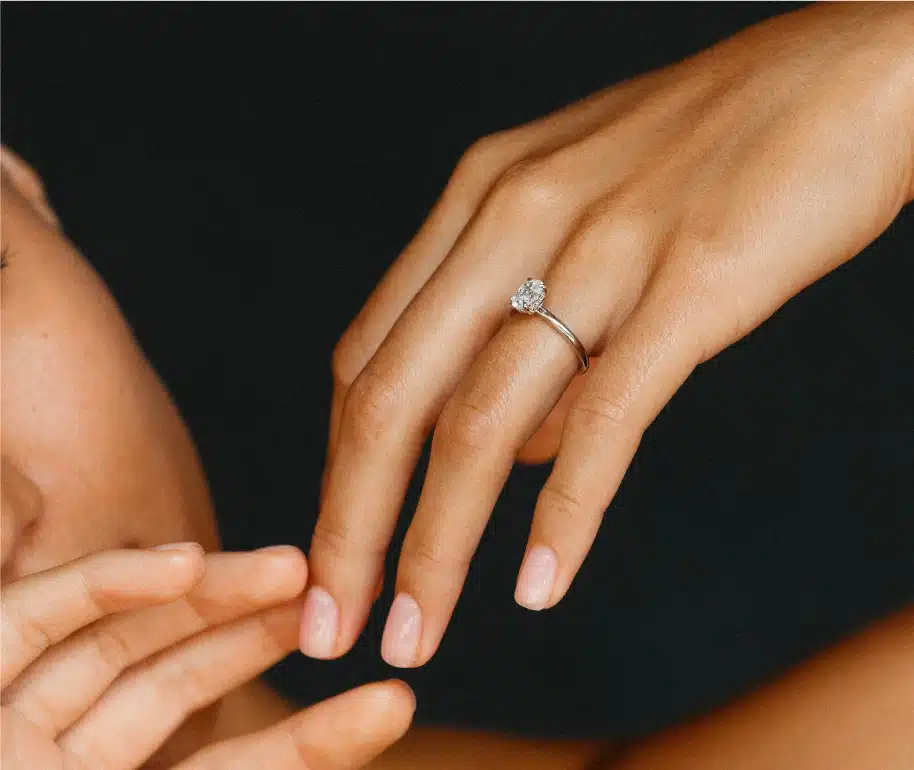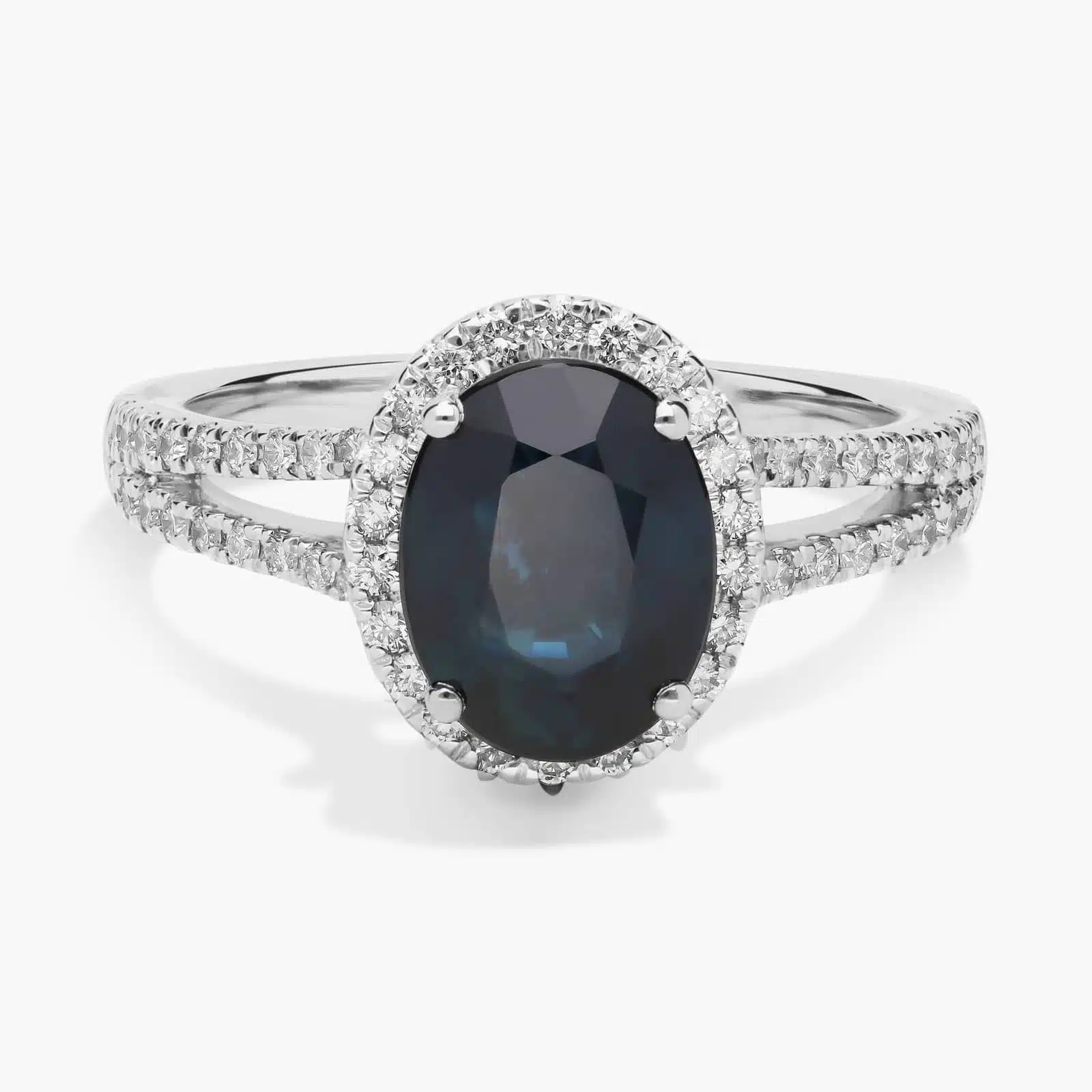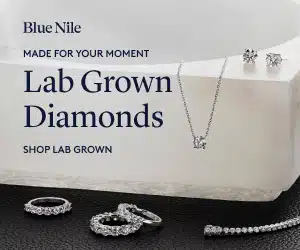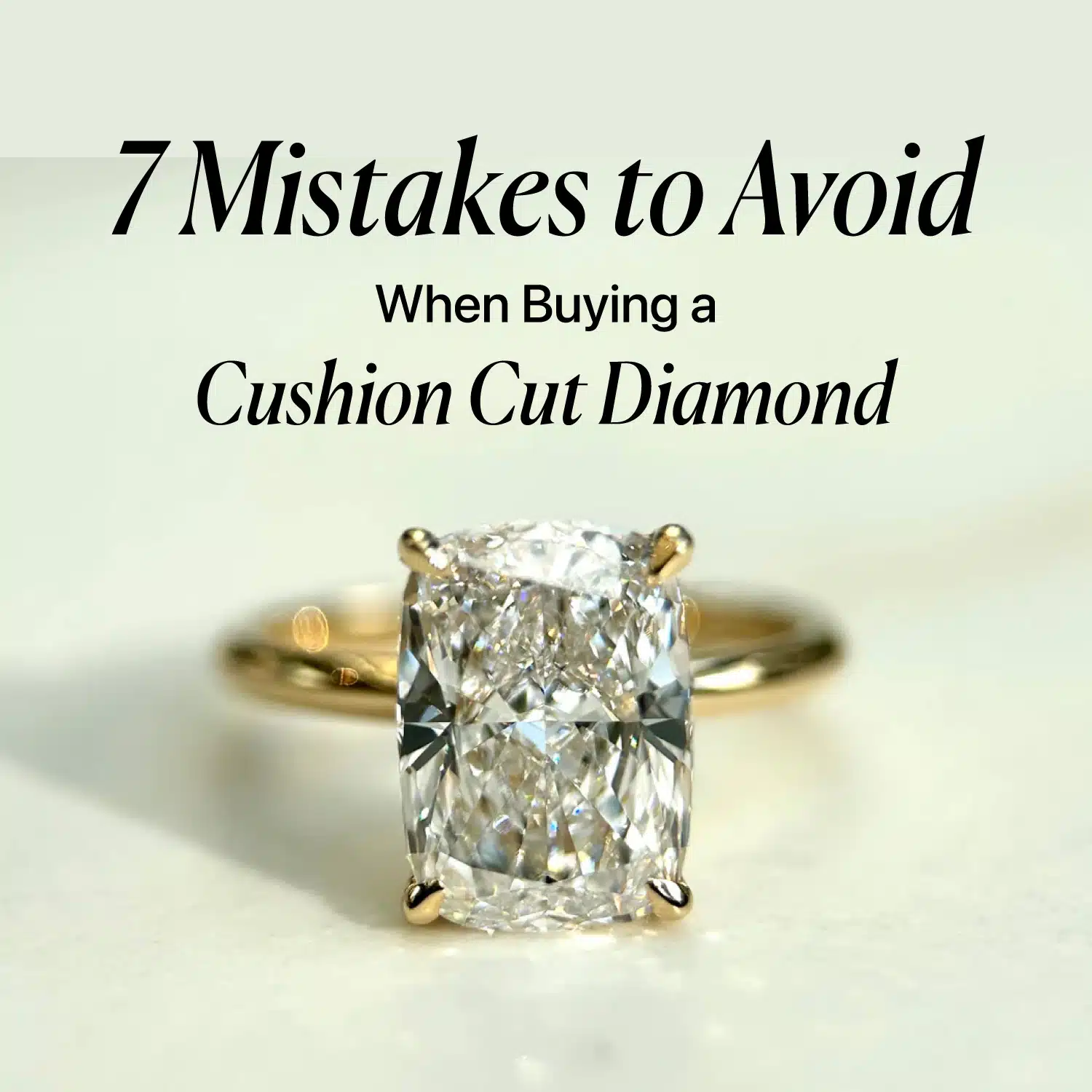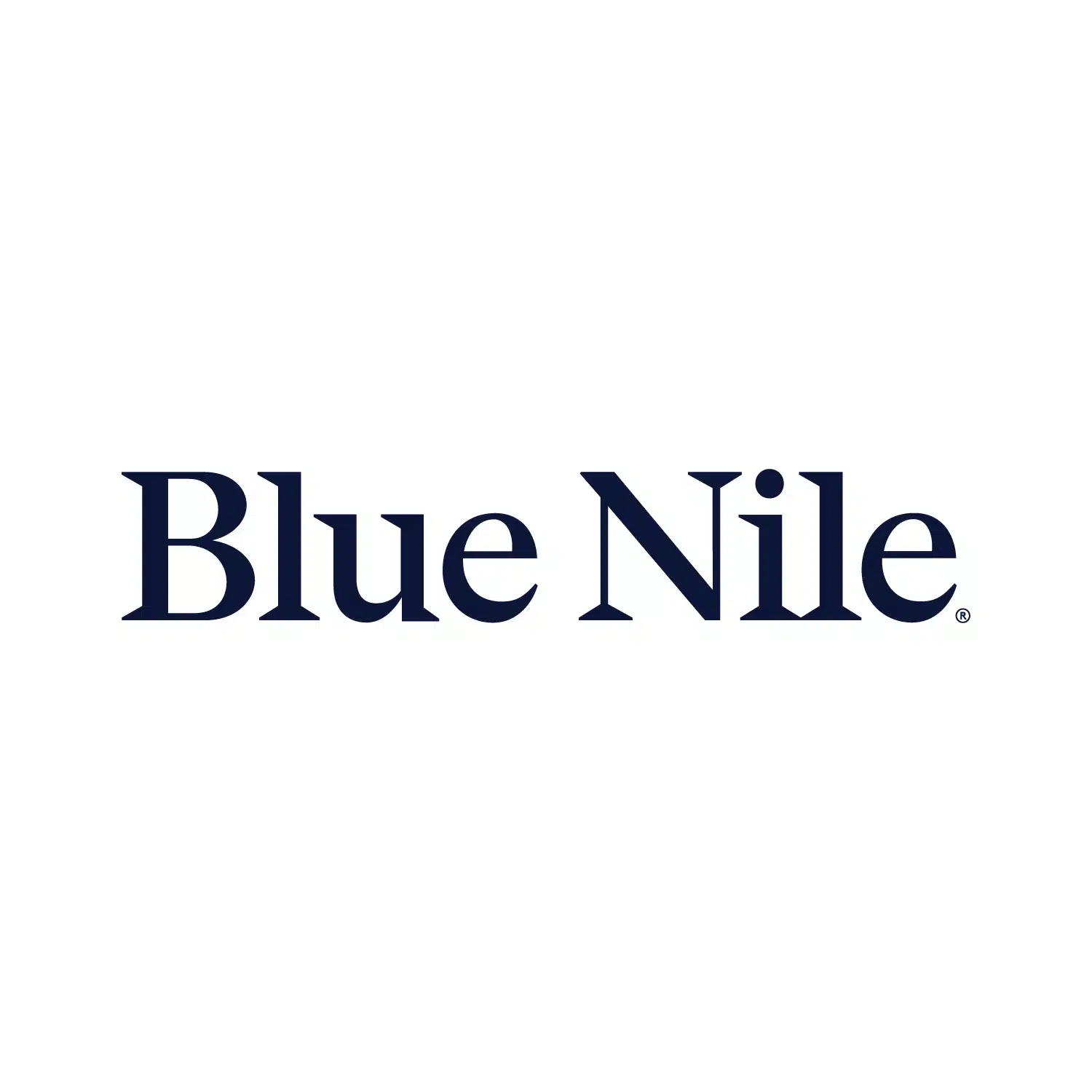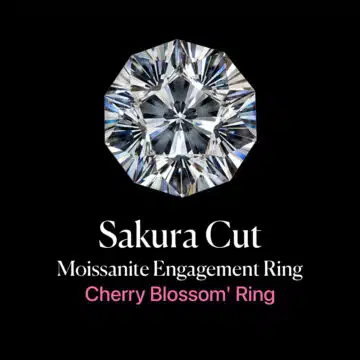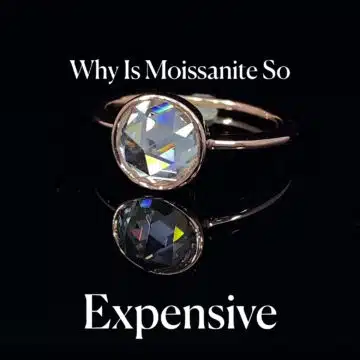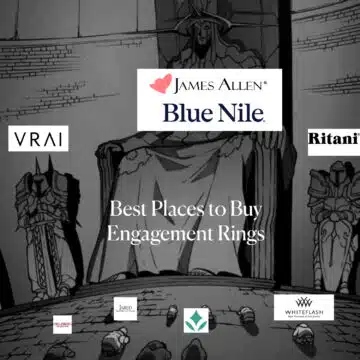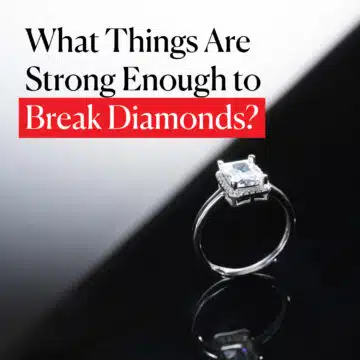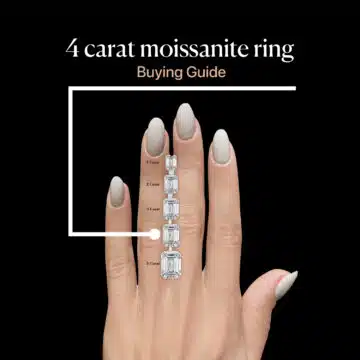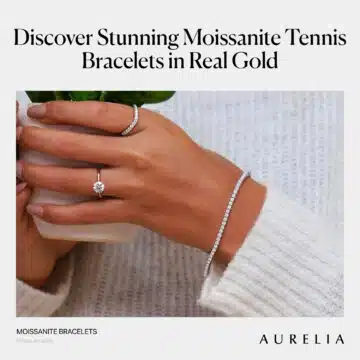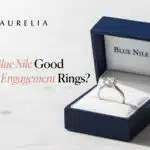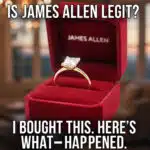The seven biggest mistakes to avoid when buying a cushion cut diamond are: not understanding the crucial difference between “crushed ice” and “chunky” facet styles, choosing the wrong length-to-width ratio for your taste, overpaying for color and clarity, and not realizing GIA does not assign a Cut grade for this complex shape.
You’ve fallen for the cushion cut’s romantic, pillow-like shape, but you’ve probably also noticed something confusing: no two look exactly alike. Some are fiery, some are glittery, some are square, some are rectangular.
It’s one of the most diverse and non-standardized shapes, and that’s exactly why it’s so easy to make a costly mistake. It’s not just you; the cushion cut is genuinely the most misunderstood diamond.
As your friend in the business, I am going to be your expert guide. We will break down the 7 most common traps I see buyers fall into, and I will give you a clear, step-by-step blueprint to avoid every one. By the end of this guide, you will be able to choose your cushion cut with absolute confidence.
Diamond IQ Test: Natural or Lab-Grown?
Two identical diamonds: GIA Certified, 1.51ct, D Color, VVS1, Ideal Cut. One is natural ($16,530), the other is lab-grown ($2,390). Choose the diamond you like better and see if you can match it to its origin.
From the “Old Mine” to a Modern Marvel
Before you can truly appreciate the cushion cut, you have to understand its history, because it has more soul and character than almost any other diamond shape. Its story doesn’t start in a modern lab with computers; it starts in the 1700s, under the soft, romantic glow of candlelight.
The ancestor of today’s cushion is a cut known as the “Old Mine Cut.” Back then, diamonds were cut by hand, and the goal wasn’t to sparkle under the harsh lights of a jewelry store, but to dance with fiery flashes in a candlelit ballroom.
To achieve this, cutters created a squarish shape with soft, rounded corners, a high crown, a deep pavilion, and 58 chunky facets. This specific combination was an engineering marvel of its time, designed to capture the low, flickering light and transform it into bold, dramatic flashes of color, or “fire.”
The modern cushion brilliant is a direct descendant of that antique cut. While its proportions have been refined by modern technology to add a huge amount of brilliance, it has never lost that vintage DNA. It is a shape that beautifully bridges the gap between old-world romance and modern-day sparkle.
Now that you know its history, let’s get down to the practical realities. As much as I love this cut, my job is to give you the unvarnished truth. Here’s my honest breakdown of the pros and cons you must consider before you fall completely in love.
| The Pros of a Cushion Cut | The Cons of a Cushion Cut |
| Incredible Sparkle & Fire | GIA Does NOT Assign a Cut Grade |
| Unique, Romantic, “Pillow” Shape | Wide Variety Can Be Overwhelming |
| Excellent Value (15-25% Less Than Rounds) | “Face-Up” Size Can Appear Slightly Smaller |
| Very Durable (No Sharp Corners) | Tends to Retain More Color Than Rounds |
So what does this all mean for you? It means you’re looking at a stone that offers incredible character, top-tier sparkle, and fantastic value.
But—and this is a big “but”—it’s a shape that requires a smarter, more educated buyer. The “Cons” on this list are the exact reasons why the following seven mistakes are so easy to make. Let’s make sure you don’t fall into any of them.
My Expert Guide to Choosing the Perfect Cushion Cut
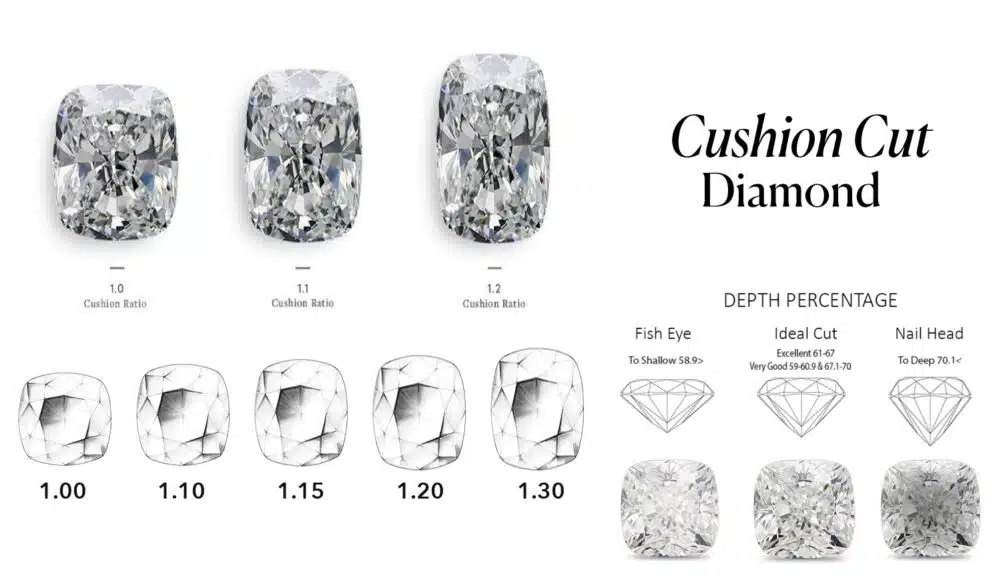
Welcome to the most important part of this guide. We are now going to walk through the seven most common—and costly—mistakes I see people make when buying a cushion cut diamond.
I’m going to break down each trap, show you why people fall into it, and give you a simple, powerful strategy to avoid it.
Master these seven points, and you will be able to buy a cushion cut with the confidence of a seasoned pro.
Mistake #1: Not Understanding its “Two Personalities” (The Most Crucial Choice)
This is, without a doubt, the single biggest point of confusion for cushion cut buyers, and it’s the first mistake you need to avoid. You can look at two 1.5-carat, G-color, VS2-clarity cushion cut diamonds with identical measurements, and they can look wildly different.
One will have broad, fiery flashes, and the other will have a thousand points of splintery, glittery light. Why? Because the cushion cut has two distinct “personalities.”
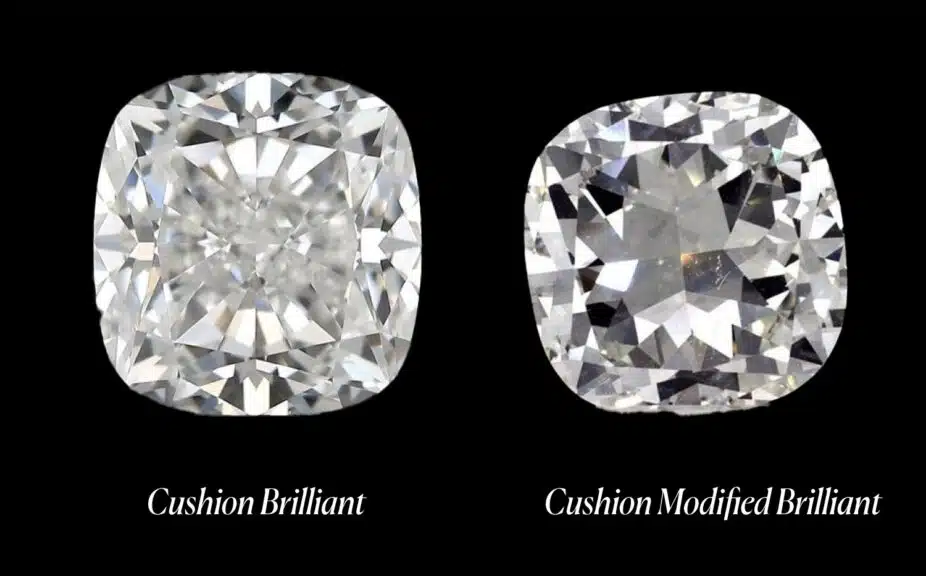
On the GIA certificate, you might see the terms “Cushion Brilliant” (the standard) or “Cushion Modified Brilliant” (which has an extra row of facets). The single greatest myth in the market is that these technical names directly correspond to the two different visual styles.
This is completely inaccurate. The truth is, the only way to know which personality a cushion cut has is to look at it.
Here are the two styles you absolutely must know:
The “Chunky” Cushion (Antique Style): This style has a facet pattern with larger, clearly defined facets. When you look into the stone, you see broader, bolder flashes of white and colored light.
This look is highly sought after by diamond connoisseurs because it closely resembles the look of the original “Old Mine Cut” diamonds. It has a romantic, “inner fire” that is incredibly captivating. It’s often compared to the bold flashes of a classic round brilliant diamond.
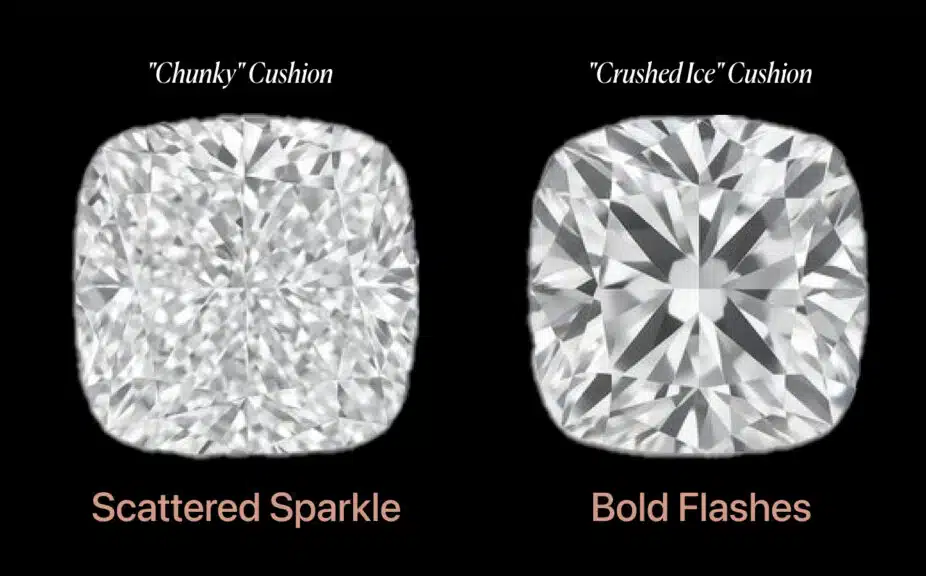
The “Crushed Ice” Cushion (Glittery Style): This style has a facet pattern with many more small, scintillating facets. When you look into the stone, you don’t see distinct facets, but rather a chaotic, glittery, and shimmering sparkle.
It’s like looking into a piece of glass that has been shattered into a thousand tiny pieces, with light bouncing off in every direction. This look is very similar to the sparkle you’ll find in a radiant cut diamond.
Let me be crystal clear: one is not better than the other. This is purely a matter of personal preference, like choosing vanilla over chocolate. The critical mistake is not knowing these two styles exist and not deciding which one you prefer before you begin your serious search.
You must look at high-quality videos of both styles to see which one speaks to you. Do you love the bold, distinct flashes of the “chunky” cushion, or the mesmerizing, glittery sparkle of the “crushed ice”? Deciding this first will narrow your search by 50% and ensure you end up with a diamond you truly love.
Mistake #2: Choosing a Shape You Don’t Love (Length-to-Width Ratio)
The second trap is not paying close attention to the diamond’s overall shape. The term “cushion cut” can describe a perfectly square diamond, or a noticeably rectangular one.
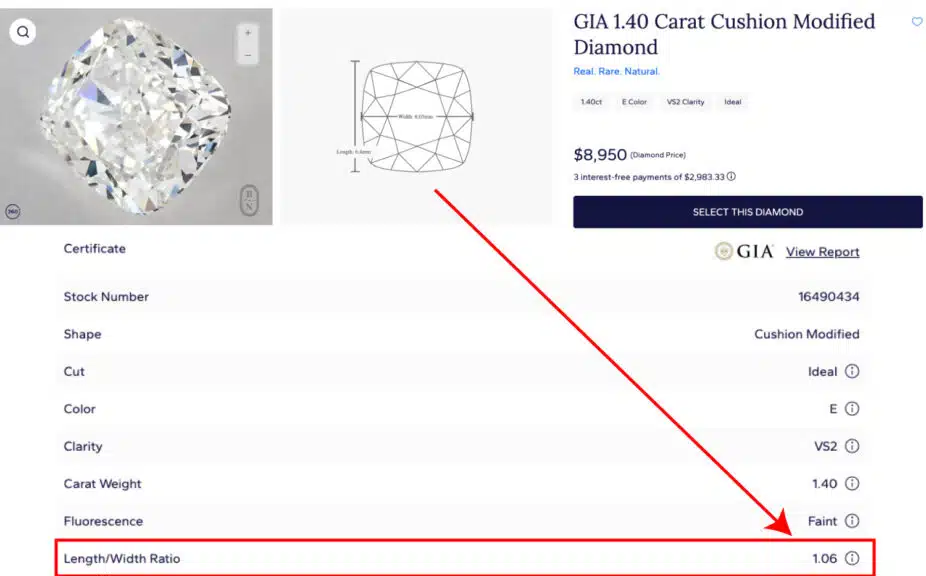
This shape is determined by its Length-to-Width Ratio (L/W), which you find by simply dividing the diamond’s length by its width (these measurements are always listed on the GIA report).
Choosing the right L/W ratio is another decision based entirely on your personal style and what you find most beautiful. Here is a guide to the different shapes you will encounter:
| Length/Width Guide | Shape Description | Mehedi’s Expert Take |
| 1.00 – 1.05 | The Classic Square | This is the traditional cushion shape, offering a symmetrical, balanced, and pillow-like appearance. It’s a timeless choice. |
| 1.06 – 1.15 | The Popular Modern Rectangle | This “soft rectangle” is currently the most popular choice. It offers a slightly elongated look that can have a very flattering, slimming effect on the finger. |
| 1.16+ | The Elongated Rectangle | This is a more dramatic and less common shape that offers a significant finger-slimming effect and a very distinct, elegant appearance. |
The mistake is buying a 1.25 ratio when you really had your heart set on a classic square. This is why you must use the L/W filter when you search on sites like Blue Nile or James Allen.
If you know you want a square, set your L/W ratio filter to 1.00 to 1.05. This simple step will ensure you are only looking at diamonds with the exact silhouette you love.
Mistake #3: Trusting the Certificate for Cut Quality
This is a massive trap that catches so many first-time buyers. I’m going to say this as clearly as I can: The GIA grading report for a cushion cut diamond does NOT include an overall Cut grade.
Unlike a round brilliant, which has a universally agreed-upon set of perfect proportions, the cushion cut is a “fancy shape” with too many variations to have a single “ideal” standard.
This means you can have a cushion cut with terrible proportions that leaks light and looks dead, but the GIA certificate will simply not warn you.
So what do you do? We use the certificate’s numbers as a starting point to filter out the obvious duds. The following table contains my expert recommendations—think of this as your “ballpark” guide.
| Cut Guide | Excellent | Very Good | Good |
| Table % | 61 – 67% | 58-60% or 68-70% | 56-57% or 71% |
| Depth % | 61 – 67% | 58-60.9% or 67.1-70% | 56-57.9% or 70.1-71% |
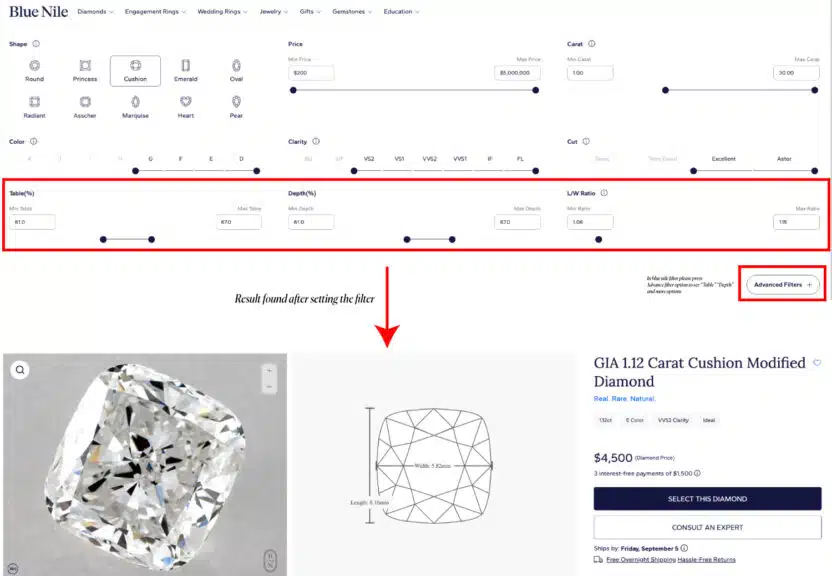
The Mehedi Method: Set your search filters for a Table and Depth percentage of under 70%. This will filter out the majority of poorly proportioned, deep stones that don’t reflect light well. However, you must understand that this is just a starting point.
Your final decision MUST be based on a visual inspection of the diamond’s video to see how it performs in the light. A diamond can have “perfect” numbers on paper and still be a dud. Trust your eyes above all else.
Mistake #4: Ignoring Color Retention
This is a subtle but financially critical mistake. The cushion cut’s facet pattern and greater depth mean that it tends to retain and show body color more than a round brilliant diamond does.
This is one of its key vulnerabilities. A G-color cushion can sometimes look a little warmer than a G-color round.
Because of this, you need to be a little more careful when choosing a color grade to ensure your stone looks bright and white. Here is my color guide based on the type of metal you plan to set it in:
| Color Guide | For White Gold / Platinum | For Yellow / Rose Gold |
| My Top Recommendation | H Color or better (G, F, etc.) | J Color or better (I, H, etc.) |
| Why? | An H will appear bright, icy-white. Going down to an I color in a white metal can sometimes show a distracting hint of warmth against the bright white of the band. | A J color will face up beautifully, and the warm tone of the metal will perfectly complement any subtle warmth in the diamond, making it a savvy value choice. |
Overpaying for a D Color or E color is an unnecessary expense for most buyers. By choosing an H-color diamond, you get a stone that looks colorless to the naked eye at a price that can be thousands of dollars less, which is always the smart move.
Mistake #5: Overpaying for High Clarity
This is the easiest mistake to make and the easiest one to avoid. When you’re spending thousands of dollars, it’s tempting to think you need a VVS or even an Internally Flawless diamond for that “perfect” look. This will cost you a fortune, and it’s completely unnecessary.
Your goal is not to buy a technically “flawless” diamond. Your goal is to buy an “eye-clean” diamond. An eye-clean stone is one that may have tiny inclusions that are visible under 10x magnification, but are completely invisible to the naked eye in a real-world setting.
Here’s my guide for cushion cut clarity:
| Clarity Guide | Grade | Mehedi’s Expert Take |
| Don’t Overpay | FL – VVS2 | The inclusions are microscopic, and you are paying a huge premium for a “flawless” certificate, not a more beautiful stone. |
| The Sweet Spot | VS1 – VS2 | These grades are almost always eye-clean, offering a perfect balance of a clean look and a great price. A fantastic and very safe choice. |
| The Value Hunter | SI1 | This is where the absolute best deals are found. Many SI1 cushion cuts are completely eye-clean, saving you thousands. However, you MUST inspect the video to ensure the inclusion isn’t a large, dark crystal in the center of the table. |
The brilliant facet pattern of a cushion cut, especially the “crushed ice” variant, is fantastic at camouflaging small inclusions. Choosing an eye-clean SI1 is the single smartest way to free up budget that can be used to get a larger or higher color diamond.
Mistake #6: Choosing an Unflattering Setting
You can do all the hard work to find the perfect cushion diamond, and then diminish its beauty by choosing the wrong setting.
A cushion’s defining features are its soft “pillow” shape and its brilliant sparkle. Your setting should always enhance these features.
- The Best Choices:
- Halo Setting: This is the absolute classic for a cushion cut for a reason. A delicate halo of small diamonds perfectly traces the pillow outline, making the center stone look significantly larger and seamlessly blending with its brilliant sparkle.
- Solitaire Setting: A simple 4-prong solitaire setting allows the unique shape and facet pattern of your cushion to be the star of the show. It’s a timeless and elegant choice that will never go out of style.
- Halo Setting: This is the absolute classic for a cushion cut for a reason. A delicate halo of small diamonds perfectly traces the pillow outline, making the center stone look significantly larger and seamlessly blending with its brilliant sparkle.
- A Setting to Be Wary Of:
- Thick Bezel Setting: While a bezel setting offers incredible security, a very thick or heavy bezel can sometimes hide the cushion’s beautiful, soft corners. This can make the stone appear smaller and more “boxy,” effectively erasing the unique shape you worked so hard to select.
Mistake #7: Not Knowing Your “Antiques” (The Taylor Swift Factor)
This is a modern mistake, but a very important one. The resurgence in popularity of vintage-style rings, famously highlighted by Taylor Swift’s recent engagement ring, has created a new point of confusion for buyers.
Many people see a ring like hers and search for a “cushion cut,” only to find that the modern ones don’t look quite the same.
This is because a ring like Taylor’s is likely not a modern cushion brilliant at all, but its ancestor: a true antique “Old Mine Cut.” You must understand the difference:
- Modern Cushion Brilliant: Cut with computers and lasers for maximum sparkle. It has smaller facets, a shallower profile, a smaller culet (the facet at the very bottom), and is designed for the bright, scintillating sparkle we expect today.
- Antique “Old Mine” Cut: Cut by hand over 100 years ago for candlelight. It has a very distinct look:
- A higher crown (the top of the diamond)
- A smaller table (the main top facet)
- A deep pavilion (the bottom of the diamond)
- A large, visible culet that you can often see as a small circle through the top of the stone.
The result of this antique cutting style is a diamond with a completely different personality. It doesn’t have the same “crushed ice” or brilliant sparkle; instead, it has a deep, romantic, and almost soulful “inner fire” with chunkier, soap-like flashes of light.
Choosing an Old Mine Cut isn’t a mistake—they are beautiful and highly sought after—but confusing them with a modern cushion brilliant is. One is for the lover of modern sparkle, and the other is a very specific, beautiful choice for a true vintage enthusiast.
How Much Does a Cushion Cut Cost (And Why Is It a Good Value)?
So, let’s talk about the bottom line: your budget. One of the single greatest advantages of choosing a cushion cut diamond is the exceptional value it offers.
On average, you can expect a well-cut cushion diamond to be 15-25% less expensive than a round brilliant diamond of the exact same carat weight and quality.
Why is there such a significant price gap? It all comes down to a concept we in the trade call “yield from rough.”
Imagine a diamond cutter has a raw, unpolished diamond crystal on their table. Their job is to cut and polish away the rough exterior to reveal the brilliant gem inside.
To achieve the perfect, mathematically precise proportions of a round brilliant, a cutter often has to grind away more than 50% of the original crystal’s weight. That discarded material is essentially diamond dust, but its cost is factored into the final, smaller gem.
The square or rectangular shape of a cushion cut, however, often conforms more closely to the natural shape of a diamond crystal. The cutter doesn’t have to discard as much of the precious rough to create the final stone.
This better yield means less waste, and that cost savings is passed directly on to you. It’s one of the few instances in the diamond world where you get a clear win without compromising on beauty.
To give you a real-world idea, here’s a sample pricing table for high-quality (G-H color, VS2-SI1 clarity) natural cushion cut diamonds. Keep in mind that prices fluctuate, but this is a fantastic starting point for setting your budget.
| Carat Weight | Typical Price (Approx.) |
| 1.00 Carat | $3,300 – $4,200 |
| 1.50 Carat | $7,500 – $9,000 |
| 2.00 Carat | $15,000 – $18,500 |
As you can see, you can get a stunning 1-carat cushion cut like this gorgeous example from James Allen for a price that would only get you a much smaller round brilliant. This value is what allows you to either save money or get a significantly larger, more impressive stone for your budget.
Famous Cushion Cuts and Gemological Types (The Sotheby’s Intel)
Now, I want to pull back the curtain a little further and share some fascinating insider knowledge. This isn’t just about your engagement ring; it’s about the incredible history and science of the cushion cut.
This shape has been chosen for some of the most famous and scientifically rare diamonds in history for very specific reasons.
Let’s start with the legends. When you look at world-famous diamonds, you see cushion cuts time and time again:
The Hope Diamond:
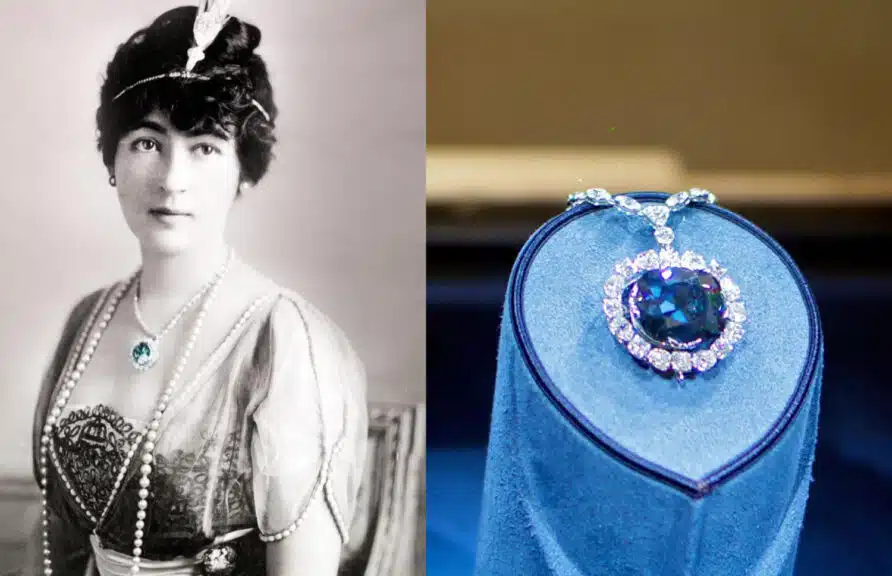
Arguably the most famous diamond in the world, this 45.52-carat, Fancy Dark Grayish-Blue stone is a testament to the cushion’s ability to showcase deep, mesmerizing color. Its storied, “cursed” history and its current home in the Smithsonian make it an icon.
The Regent Diamond:
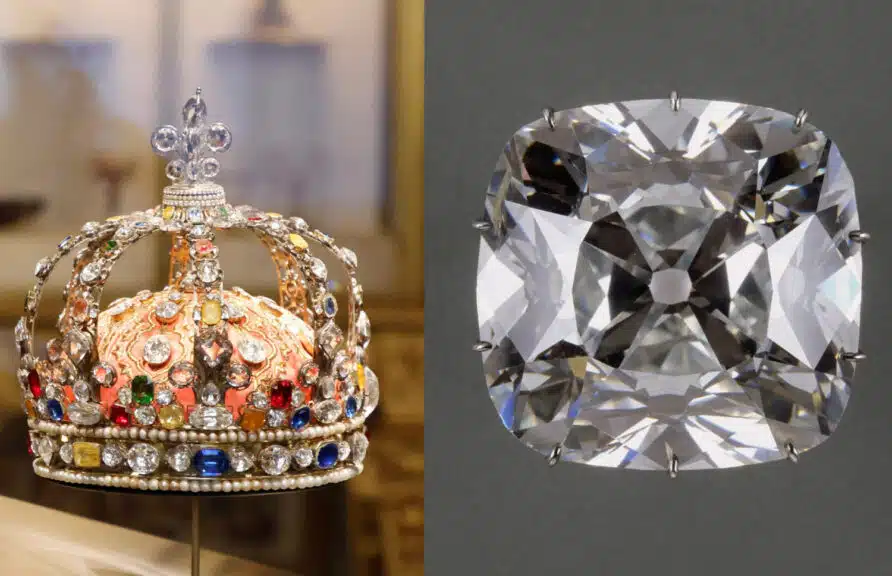
Housed in the Louvre, this stunning 140.64-carat cushion is famous for its exceptional D-color and flawless clarity. Once part of the French Crown Jewels, its nearly perfect cut makes it a benchmark for brilliance.
The Tiffany Yellow Diamond:
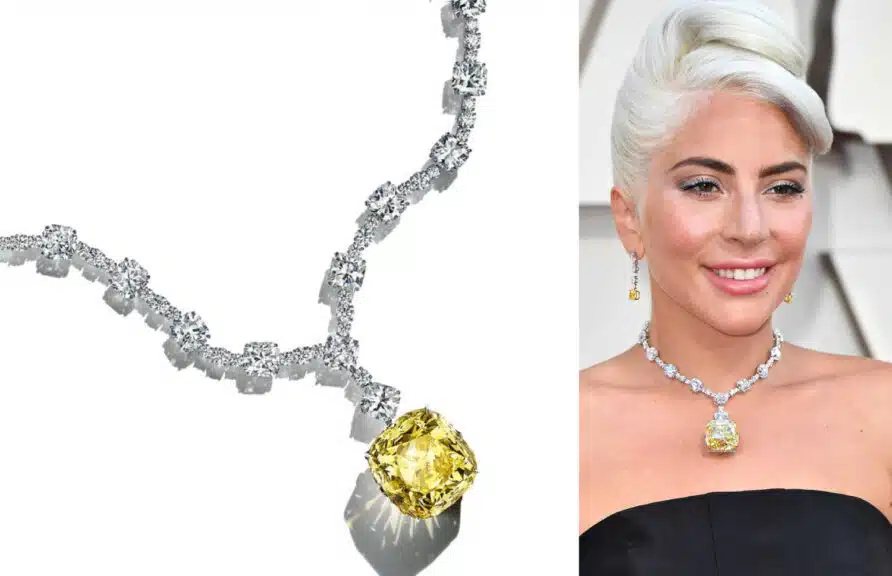
Worn by legends like Audrey Hepburn and Lady Gaga, this 128.54-carat Fancy Yellow cushion is a masterpiece of color. The cut was specifically chosen to enhance its vibrant, sunny hue, proving the cushion’s versatility.
So why were these incredible, world-changing diamonds all cushion cuts? Many of them fall into a scientifically rare category of diamonds known as Type IIa.
Here’s a simple breakdown of what that means:
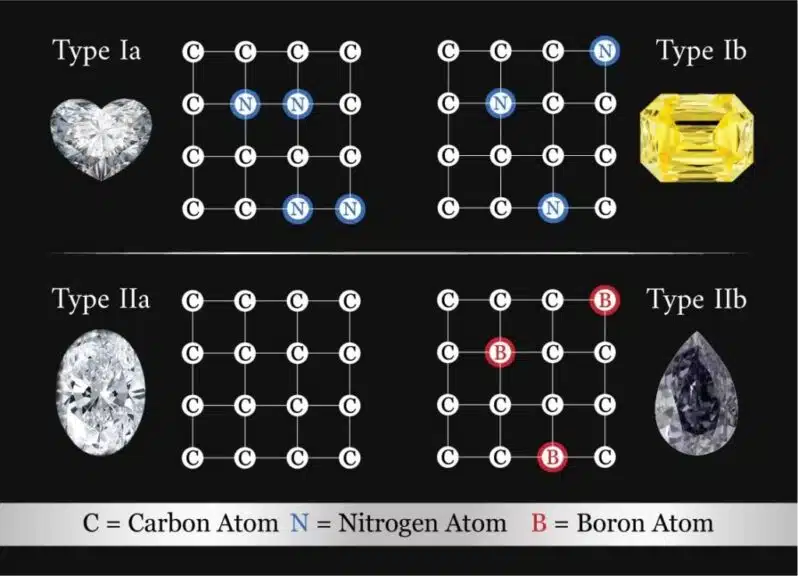
Type Ia Diamonds:
These are the “standard” diamonds. About 98% of all diamonds mined are Type Ia. They contain trace amounts of nitrogen atoms in their crystal structure, which is what gives many diamonds a very faint yellowish tint. The vast majority of engagement rings are made from Type Ia diamonds.
Type IIa Diamonds:
This is the VIP section of the diamond world. Making up less than 2% of all diamonds, these are the purest of the pure. They contain no measurable nitrogen or boron impurities in their crystal structure.
This chemical purity results in breathtaking clarity and allows them to achieve a perfectly colorless D grade that is almost transparent.
When these diamonds are colored, like the famous 11.15-carat Williamson Pink Star that Sotheby’s sold for nearly $60 million in 2022, the color is often caused by structural deformities, not impurities, resulting in an exceptionally pure hue.
There’s even a rarer category, Type IIb, which contains traces of boron and results in the ultra-rare blue color of the Hope Diamond.
While the average buyer doesn’t need to hunt for a Type IIa diamond, understanding this gemological distinction helps you appreciate why the cushion cut is so revered at the highest levels of the market.
Its large facets and deep profile are the perfect canvas for showcasing the unparalleled clarity of a Type IIa stone or deepening the rich, saturated color of a fancy colored diamond.
It is, and always has been, a cut chosen for connoisseurs. When you browse the auctions at a place like Sotheby’s, you are seeing the pinnacle of this incredible shape’s potential.
How Does the Cushion Compare to the Round, Princess, and Oval?
Okay, you love the cushion cut. But a nagging question probably remains: “Am I missing out on something with a round, an oval, or a princess?” This is one of the most common decision points for any buyer, because these four shapes are the titans of the engagement ring world.
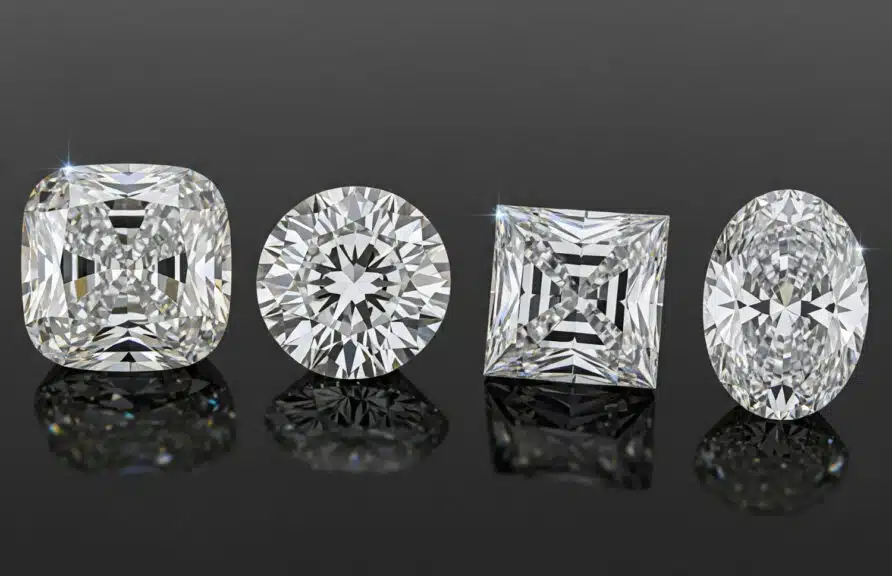
As your friend in the business, I want to give you a complete, no-nonsense breakdown. We’re going to put them head-to-head on the four factors that truly matter: their sparkle, their price, their durability for everyday wear, and how big they actually look on a finger.
First, here’s the scannable scorecard. Then, we’ll dive deep into what these numbers actually mean for you.
| Feature | Cushion Cut | Round Brilliant | Princess Cut | Oval Cut |
| Sparkle Style | “Crushed-Ice” or “Chunky” | The Most Brilliant | Sharp & Geometric | Brilliant & Shimmery |
| Price | Excellent Value | Highest Price | Excellent Value | Excellent Value |
| Durability | Excellent (Rounded Corners) | Excellent (No Corners) | Good (Sharp Corners) | Excellent (No Corners) |
| Visual Size | Tends to look smaller | True-to-Weight | Looks Smaller (Deep) | Looks Largest |
The Deep Dive: What This Data Really Means
1. Sparkle Style: What’s the “Personality” of the Light?
The single biggest difference between these shapes is the character of their sparkle. They are all brilliant, but they express it in very different ways.
- The Cushion Cut: As we discussed, the cushion has two distinct personalities. You can choose the “Chunky” style for big, broad, almost watery flashes of light and color, or the “Crushed-Ice” style for a thousand points of splintery, glittery light. This variability is its greatest strength and its greatest complexity.
- The Round Brilliant: This is the scientific benchmark for sparkle. A Round Brilliant Cut Diamond is engineered with mathematical precision for one purpose: to return the maximum amount of light.
Its sparkle is an explosive, uniform, and incredibly fiery display. If your goal is the absolute most “bling” possible, the round brilliant is the undisputed champion. - The Princess Cut: A princess cut’s sparkle is as sharp and geometric as its shape. It has a distinct “mosaic” or checkerboard pattern of light and dark.
The flashes are long, linear, and exceptionally bright. If you love clean lines and a modern, almost architectural sparkle, a Princess Cut Diamond Ring is an unbeatable choice. - The Oval Cut: An oval’s sparkle is best described as elegant and shimmering. It shares the same “crushed-ice” quality as some cushions but in an elongated form.
This creates a gorgeous, cascading shimmer across its larger surface area, offering incredible brilliance with a graceful, finger-covering presence. We do a full analysis in our Oval Cut Diamond Buying Guide.
2. Price: Where is the Smart Money?
- The Fancy Shape Advantage (Cushion, Princess, Oval): These three shapes are collectively known as “fancy shapes,” and they all offer a fantastic value proposition. On average, you can expect to pay 15-25% less for a cushion, princess, or oval than you would for a round brilliant of the exact same carat weight and quality.
This is because all three of these shapes conform more closely to the natural, octahedral shape of a rough diamond crystal, meaning less of the precious rough is wasted during the cutting process. - The Round Brilliant Premium: The round brilliant is the undisputed king of price, and always will be. The combination of massive global demand and the low “yield from rough” (often less than 40%) means you are paying a significant premium for its classic status and unmatched brilliance.
3. Durability: Which Can Handle Real Life the Best?
- The Rounded Champions (Cushion, Round, Oval): These three shapes are all fantastic choices for an active lifestyle. Their defining characteristic is a lack of sharp, pointed corners. This makes them exceptionally durable and highly resistant to the accidental bumps and scrapes that can cause chipping.
- The Princess Cut Vulnerability: The princess cut’s one structural weakness is its four sharp, pointed corners. If left unprotected, these corners can be prone to chipping. However, this is easily solved with a good setting!
A “v-prong” or “bezel” setting that covers those vulnerable points provides excellent protection and makes it a perfectly safe choice for everyday wear.
4. Visual Size: Who Delivers the Most “Bang for Your Buck”?
- The Clear Winner: Oval Cut. Because of its elongated shape, an oval will always look larger on the finger than any of the other three shapes at the same carat weight. It offers the best “finger coverage.”
- The Benchmark: Round Brilliant. This is the “true-to-weight” standard against which all others are judged.
- The Deeper Cuts (Cushion and Princess): Both the cushion and the princess cut are often cut quite deep to maximize their brilliance. This means a significant portion of their carat weight is “hidden” in the depth of the stone, which can make them look slightly smaller face-up than a round brilliant of the same weight.
The Mehedi’s Take: The choice between these four comes down to your personal priorities. If you want maximum, scientific sparkle and a timeless look, choose the Round.
If you want a sharp, modern sparkle and excellent value, choose the Princess. If you want the biggest-looking diamond with an elegant, shimmering sparkle, choose the Oval.
And if you want a romantic, high-character stone with a deep history and fantastic value, the Cushion is your perfect match. To explore even more options, our general Diamond Shapes Guide is a fantastic resource.
Your Cushion Cut Questions, Answered
You’ve got the blueprint, but now it’s time to clear up all the specific questions that pop up during the search. Here are my direct, no-nonsense answers to everything you need to know about the cushion cut diamond.
The Verdict: A Shape for the Informed Buyer
The cushion cut is a stunning, romantic, and high-value choice, but it is not a “buy it off the certificate” diamond. It’s a shape that rewards a buyer who has done their homework and trusts their own eyes.
By avoiding these 7 common mistakes, you have moved from a regular customer to an informed expert. You now have the knowledge to find a cushion cut diamond that is not only beautiful, but also a smart and savvy investment. Trust your eyes, follow the blueprint, and find the perfect one for you.
Blue Nile is one of the biggest and most recognized online jewelry retailers, offering an extensive and exclusive inventory. Their high-resolution images are improving and getting closer to the quality offered by James Allen, while their prices remain highly competitive. Right now, Blue Nile offers up to 30% savings on jewelry during a limited-time sale.
WHAT WE LOVE ABOUT THEM:
- 30-day no-questions-asked return policy, with a prepaid shipping label provided by Blue Nile.
- Lifetime warranty on all purchases.
- Free shipping on every order.
- Complimentary services every six months, including prong tightening, repolishing, rhodium plating, and cleaning.
- Insurance appraisal included with your purchase.
- One free resizing within the first year.
- High-quality images available for roughly half of their diamond selection.
- 24/7 customer service support.
- Full credit toward future upgrades, as long as the new item is at least double the value.
- Best-in-class order fulfillment process.
James Allen is a top leader in online diamond sales, offering cutting-edge imaging technology that lets you inspect diamonds as if you were using a jeweler's loupe. With the largest exclusive selection of loose diamonds available online and excellent pricing, they also boast one of the finest collections of lab-created diamonds on the market. They currently run a 25% discount on selected lab-grown diamonds!
WHAT WE LOVE ABOUT THEM:
- 30-day no-questions-asked return policy, with a prepaid shipping label provided by James Allen.
- Lifetime warranty on all purchases.
- Free international shipping.
- Complimentary prong tightening, repolishing, rhodium plating, and cleaning every six months.
- Insurance appraisals included with purchases.
- One free resizing within 60 days of purchase.
- Free ring inscriptions available.
- Best-in-class high-quality imagery for every diamond in stock.
- 24/7 customer support.
- Premium, best-in-class packaging.
Continue Your Research Journey
You’ve just mastered the most misunderstood diamond shape, and now you have the knowledge to find a truly spectacular one. If you’re ready to take the next step, these hand-picked expert guides will help you dive even deeper into the practicalities of buying and owning a diamond.
The In-Depth Retailer Reviews
- Our #1 Recommended Retailer: The Ultimate James Allen Review – (https://moissanitebyaurelia.com/james-allen-review/)
- The Industry Heavyweight: The Complete Blue Nile Review for 2024 – (https://moissanitebyaurelia.com/blue-nile-reviews-2024/)
- Another Head-to-Head Battle: Brilliant Earth vs. James Allen Compared – (https://moissanitebyaurelia.com/brilliant-earth-vs-james-allen/)
Advanced Diamond Knowledge
- Mastering the Color Grade: An Expert Guide to the G Color Diamond – (https://moissanitebyaurelia.com/g-color-diamond/)
- The Full Story on Synthetics: An Expert Guide to the Types of Lab-Grown Diamonds – (https://moissanitebyaurelia.com/types-of-lab-grown-diamonds/)
- Diving Deeper on Clarity: A Full Breakdown of VS1 vs. VS2 Diamonds – (https://moissanitebyaurelia.com/vs1-vs-vs2-diamond/)
Practical Guides & Strategies
- Your Next Step: A Step-by-Step Guide to Build Your Own Engagement Ring on James Allen – (https://moissanitebyaurelia.com/build-your-own-engagement-ring-on-james-allen/)
- Visualize the Size: A Visual Diamond Carat Size Chart – (https://moissanitebyaurelia.com/diamond-carat-size-chart/)
- The Foundation: Our No-Nonsense Diamond Buying Guide – (https://moissanitebyaurelia.com/diamond-buying-guide/)

